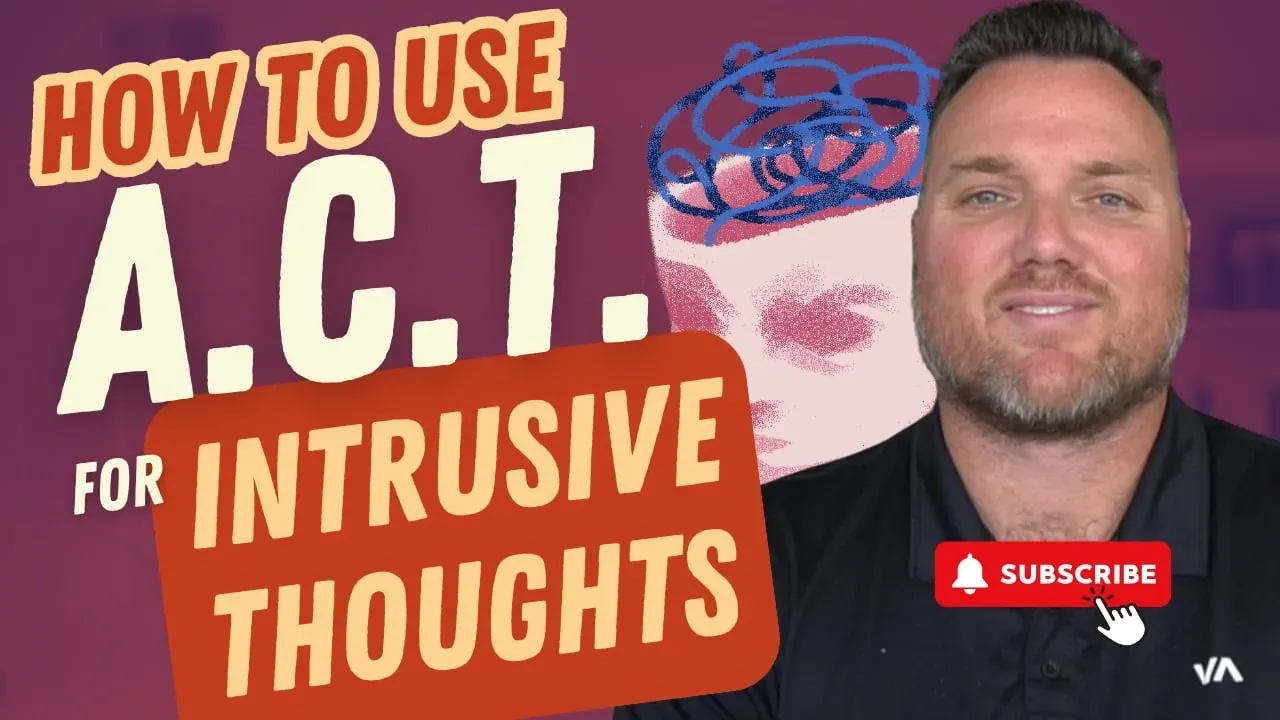How to use ACT for Intrusive Thoughts
Apr 13, 2025
Navigating Intrusive Thoughts with Acceptance and Commitment Therapy (ACT)
Hey there, welcome to today's deep dive into effectively using Acceptance and Commitment Therapy (ACT) to manage intrusive thoughts. If you're grappling with OCD or intrusive thoughts, you'll find this guide handy on your recovery journey.
Understanding ACT in the Context of Intrusive Thoughts
ACT isn't designed to help us eliminate intrusive thoughts or anxiety, but rather to help us build psychological flexibility. Many people often make the mistake of trying to use ACT to get rid of these unwanted thoughts and feelings. It's essential to understand that this therapy's core purpose is not to eliminate discomfort but to navigate through it more effectively.
The Six Pillars of ACT
ACT emphasizes six foundational pillars:
-
Acceptance of the Present Moment: Embrace the current experience without resisting it. Accept your feelings and thoughts as they are right now.
-
Self as Context: Understand your sense of self as the context, not the content (thoughts or feelings) you experience.
-
Cognitive Defusion: Create a space between you and your thoughts, allowing you to observe them without judgment.
-
Being Present: Stay grounded in the present. Recognize that your discomfort is temporary and only exists in the now.
-
Committed Action: Make decisions based on your values rather than trying to escape uncomfortable thoughts or feelings.
-
Values-Based Living: Engage in actions that are aligned with your core values, not dictated by intrusive thoughts.
The Paradox of Resistance
The more you resist a thought or push anxiety away, the more these experiences tend to intensify. This is often referred to as the white bear effect or ironic process. By accepting and not resisting these experiences, you paradoxically start experiencing them less.
ACT vs. Traditional Approaches
ACT and Exposure and Response Prevention (ERP) do share similarities. Both approaches discourage behaviors that sustain OCD loops. However, where ACT differs is its focus on consciousness and the understanding of self as context. ACT isn't a tool to achieve a specific result, such as eradicating intrusive thoughts; it's about embracing a paradigm shift to maintain psychological flexibility.
Integrating ACT and ERP
In the management of OCD and intrusive thoughts, integrating ACT with ERP can be highly beneficial. Start with exposure to uncomfortable thoughts and feelings, and then transition to ACT principles to maintain your progress and continue living a values-driven life.


